Peyronie's Disease
What is Peyronie's?
Peyronie’s Disease is a condition resulting from scar tissue formation on the penis. The scar, which is often referred to as a “plaque,” develops on the sheath surrounding the vascular erectile tissue within the penile shaft. This may result in changes to the shape of the penis such as bending/curvature, narrowing, and penile shortening. Sometimes these changes are relatively minor, but other instances they can be quite severe. Men will sometimes experience more difficulty achieving or maintaining a firm erection as well.
It is important to emphasize that Peyronie’s Disease is a benign medical condition – meaning it is not cancerous. It will not impact your overall health, but for many men with Peyronie’s Disease it can be a source of significant distress.
Peyronie’s Disease is actually more common than you might imagine. Typically, PD is diagnosed in middle-aged men, though it can occur in men of any age, from adolescence onward. Although it tends to occur most frequently in Caucasians, men of any ethnic group may develop PD.
CLICK HERE To See The Top 10 Male Enhancers
Symptoms of Peyronie's Disease
Peyronie’s Disease may present with a number of different symptoms. Some men with Peyronie’s Disease experience pain in the penis with or even without an erection. This is most common with the initial stages, and the pain tends to improve and resolve over time. The plaque (scar) can be felt as a hardened area or “nodule” along the shaft of the penis. This may cause changes to the shape of the penis such as curvature or bending in the direction of the scar. There may be narrowing of the penis, and if the plaque extends around the entire penis, it may cause the penis to take on an hourglass shape. Many men also report shortening of the penis, as well as changes in the hardness of their erections. Taken together, these symptoms often make it difficult for men and their partners to participate in satisfactory sexual activity. This can create a sense of hopelessness and may lead to emotional distress.
Usually, Peyronie’s Disease happens in two stages. In the first stage (the acute phase), which may last 3-12 months or more, the plaques start to form and the penis starts to curve, narrow, or shorten. A man in this stage is more likely to have pain. In the second stage (the chronic phase), the plaque and curvature start to stabilize, but the penis usually doesn’t straighten. Pain may start to subside, but erectile dysfunction may continue or get worse.
Effects of Peyronie's
Psychological Factors
It’s not easy to have Peyronie’s disease. Men with a curved penis feel a variety of emotions: anger, sadness, shame, and anxiety, just to name a few. Often, these feelings are intertwined. Let’s take a look at some of them.
Anger and Frustration
Like many illnesses, Peyronie’s disease can change a man’s life. It affects his manhood – that physical part of him that defines his masculinity. So it’s not surprising that some men with a curved penis may feel anger. They may wonder, “Why does this have to happen to me? Why can other men enjoy sex when I can’t?”
A bent penis can also lead to frustration – with the pain, with the potential inability to have intercourse, and with any relationship problems that may result. Some men get frustrated if their doctor isn’t responsive to their needs. Or, they get frustrated because they don’t know how to broach the subject with a doctor or partner.
Fear and Anxiety
Some men fear the unknown of Peyronie’s disease. Will they still be able to have erections and orgasms like they used to? Will sexual activity make the problem worse? Will the pain subside? Will their penis ever straighten? Will they ever get 100% better? Will their current partner, or future partners, find them unattractive or reject them? Will they be able to enjoy sex again?
Satisfying a partner is another great concern. Will the partner still be able to reach orgasm if intercourse isn’t possible? Will he or she be understanding and patient about the situation?
Sadness and Loss
It’s not uncommon for men with Peyronie’s disease to mourn what used to be. Intimacy with their partner may have changed and they miss that exciting connection. They may see a happy, flirting couple at the mall or an intense sex scene in a movie and grieve the loss of these aspects of their own life.
Shame, Embarrassment, and Low Self-Esteem
As we mentioned earlier, some men with Peyronie’s disease feel that their manhood or virility has been lost or damaged. They may feel like less of a person and ashamed if they can’t perform the way they used to. They may also feel embarrassed by the appearance of their bent penis, especially if they are starting a new relationship and worry that their partner will be turned off.
Gay men may be especially vulnerable, as they might feel even more self-conscious about a curved penis when a partner has no problems with Peyronie’s disease.
Isolation and Avoidance
Often, men with Peyronie’s disease and their partners separate emotionally from one another. They may not know how to talk about their situation and, therefore avoid it, making them feel more alone.
Dating and finding new sexual partners may be daunting for single men with Peyronie’s disease. Fear of seeming inadequate and embarrassment over their physical appearance can make men reluctant to start new relationships, causing them to isolate themselves even more.
Causes of Peyronie's Disease
Much is still unknown about the causes of Peyronie’s Disease. Research suggests it is a disorder of wound healing that occurs after some type of trauma to the penis. The classic example would be that of a patient who experiences a “misthrust” during sexual intercourse, where the penis slips out of the vagina and hits the partner’s pubic bone or perineum causing a bending of the penis. However, most men who develop Peyronie’s Disease do not recall any type of significant trauma like this. Instead, it is likely that most men experience some mild trauma (we call this “microtrauma”) to the penis during sexual activity. This goes unnoticed, but, in some cases, it may still trigger scar tissue formation.
Normally, wounds heal in three phases: First, enzymes clean the wound of dead or damaged tissue. Second, the body repairs the wound by forming a scar that strengthens the injured tissue. Finally, the collagen fibers that make up the scar are broken down and realigned leaving a smaller “remodeled” scar. In Peyronie’s Disease, not only is scar formation more “extreme,” but scar remodeling either fails to occur or is insufficient.
The abnormal scarring of Peyronie’s Disease is believed to be related to the processes that occur at the cellular level which stimulate the formation of scar tissue in the second phase of wound healing. During this process, excessive amounts of collagen, which is a type of protein, accumulate to create a plaque. Enzymes that normally regulate collagen production, and are responsible for remodeling scar tissue in the third phase of wound healing, may also play a role. Patients with Peyronie’s may produce too few of these enzymes or the enzymes they produce may not function properly to remodel the scar. To further complicate matters, in some men, part of the collagen in the plaque may be replaced by calcium.
Peyronie's - Treatment
Peyronie’s Disease is a benign, or non-cancerous, condition. This means that, if the symptoms are relatively mild or do not bother you, it is OK to simply observe. There have only been a few studies that have looked at what happens to men over time who decide not to pursue treatment during the first year or so after their symptoms start. One of the original studies from the 1970’s suggested that as many as half of all men with Peyronie’s Disease would see improvement with observation alone. Unfortunately, we now know that only about 5-15% of will actually see spontaneous symptom improvements. In contrast, up to half of men with Peyronie’s may see some worsening of their symptoms (particularly curvature and shortening of the penis) over the first year. Thankfully, things will eventually stabilize and, nearly always, the pain (if present) will get better or completely go away.
For those men who want to pursue treatment, it is important for the treating clinician to discuss the goals of treatment. Goals may include preventing things from getting worse, improving curvature, recovering some penile length, resolving pain, and ultimately making it easier to participate in sexual activity. It is usually not possible to restore the penis to what it was before the Peyronie’s Disease started. Each individual will have his own set of goals, and there is not a single right treatment for everyone.
Pills
Researchers have studied a number of oral therapies for PD, including: carnitine, colchicine, potassium aminobenzoate, tamoxifen, pentoxifylline, and vitamin E. These oral agents have been evaluated because of anti-oxidant or other properties which are thought to interfere with collagen synthesis and scar formation.
Unfortunately, most studies using oral PD therapies haven’t been well controlled. Since some PD cases improve on their own, and few studies of oral medication have compared treated patients to an untreated “control group,” it’s not clear if the oral therapies for PD offer any benefit over no treatment at all in terms of penile curvature, pain, or the ability to have intercourse.
10 Male Enhancement Products For Men
If you’re going to spend your hard-earned money on a male enhancer, we think you should get the most effective product available – at the best price.
See the 10 proven male enhancers below that work best and offer great value for your money.

Product Name: #1 - Prexil By Pro Edge Labs *
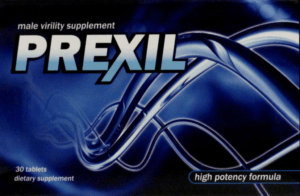
-
Increased Stamina
(5)
-
Stronger Erections
(4.8)
-
Boosts Testosterone
(4.9)
-
Libido Enhancer
(4.9)
-
Quality Ingredients
(5)
Product Name: #2 - VigRX Plus By Leading Edge Health*
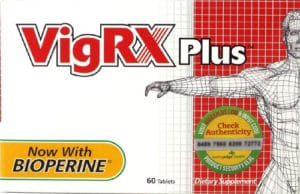
-
Increased Stamina
(4.8)
-
Stronger Erections
(4.9)
-
Boosts Testosterone
(4.8)
-
Libido Enhancer
(4.9)
-
Quality Ingredients
(4.9)
Product Name: #3 - Volumaxx Pills*
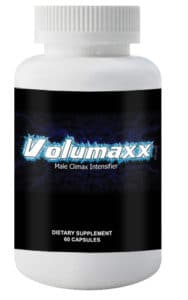
-
Increased Stamina
(4.5)
-
Increased Semen
(5)
-
Climax Intensity
(4.9)
-
Libido Enhancer
(4.6)
-
Quality Ingredients
(4.9)
Product Name: #4 - ProSolution Plus*

-
Increased Stamina
(4.7)
-
Stronger Erections
(4.8)
-
Boosts Testosterone
(4.5)
-
Libido Enhancer
(4.8)
-
Quality Ingredients
(4.8)
Product Name: #5 - Semenax*
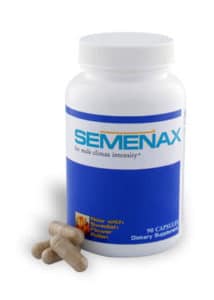
-
Increased Stamina
(4.5)
-
Increased Semen
(4.8)
-
Climax Intensity
(4.7)
-
Libido Enhancer
(4.5)
-
Quality Ingredients
(4.8)
Product Name: #6 - ProEnhance*

-
Increased Stamina
(4)
-
Stronger Erections
(4)
-
Boosts Testosterone
(3.5)
-
Libido Enhancer
(4.2)
-
Quality Ingredients
(4.3)
Product Name: #7 - Extenze*
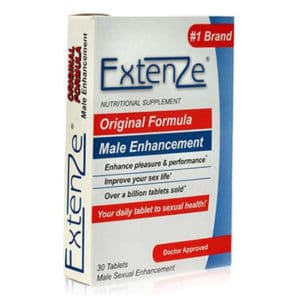
-
Increased Stamina
(3.8)
-
Stronger Erections
(3.9)
-
Boosts Testosterone
(2.6)
-
Libido Enhancer
(3.4)
-
Quality Ingredients
(3.8)
Product Name: #8 - Nugenix*

-
Increased Stamina
(3)
-
Stronger Erections
(2.7)
-
Boosts Testosterone
(2.6)
-
Libido Enhancer
(2.9)
-
Quality Ingredients
(3)
Product Name: #9 - Ageless Male*
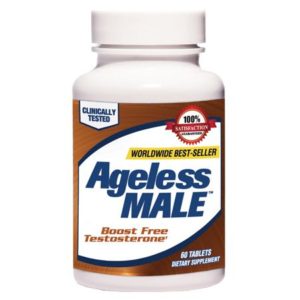
-
Increased Stamina
(2.8)
-
Stronger Erections
(2.4)
-
Boosts Testosterone
(2.9)
-
Libido Enhancer
(2)
-
Quality Ingredients
(2)
Product Name: #10 - SizeVitrexx*

-
Increased Stamina
(2.4)
-
Stronger Erections
(2.6)
-
Boosts Testosterone
(2.4)
-
Libido Enhancer
(2.1)
-
Quality Ingredients
(2.2)
Table of Contents
